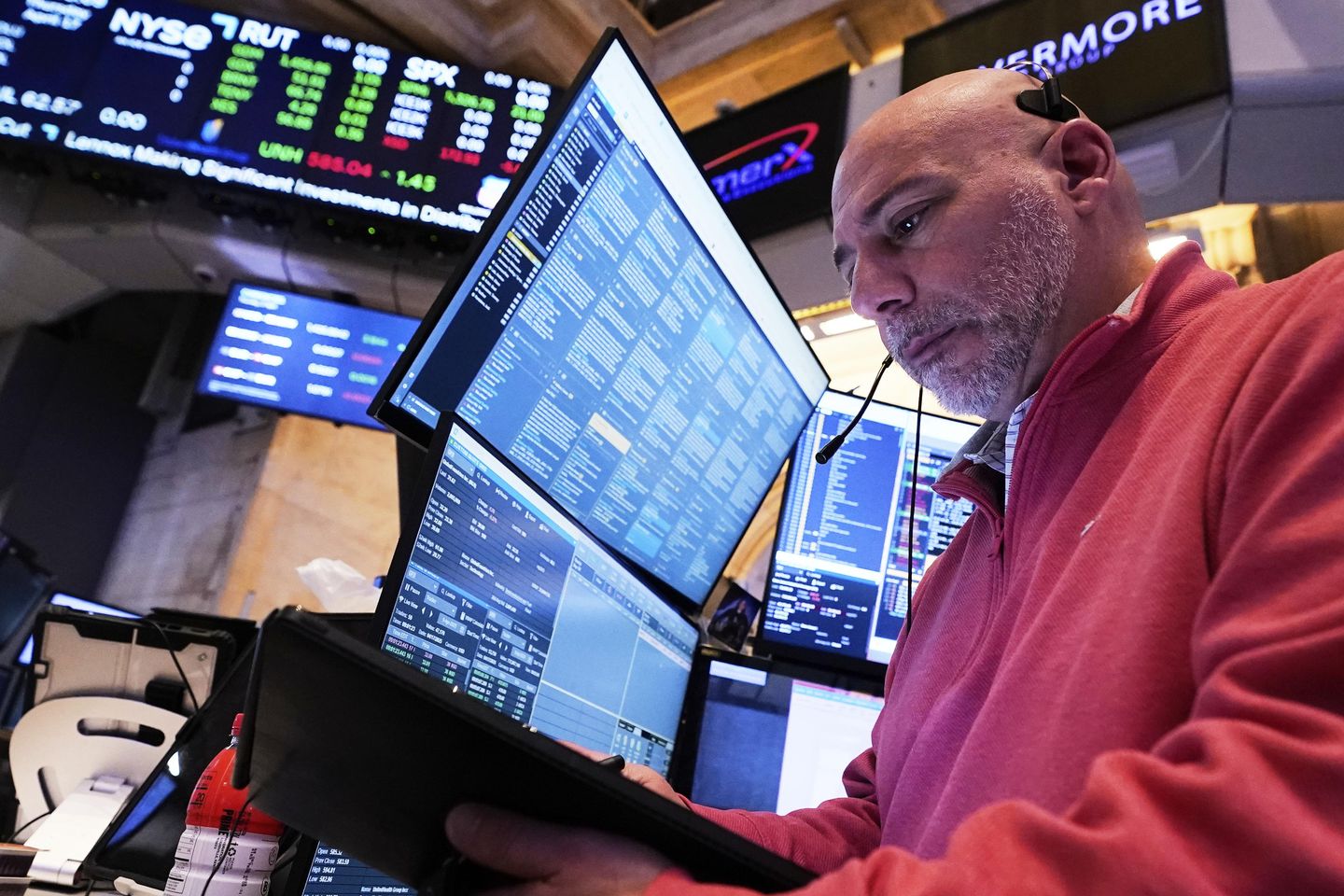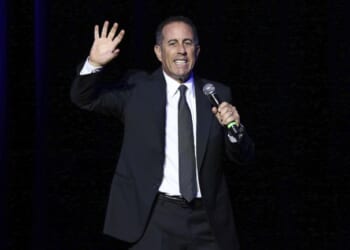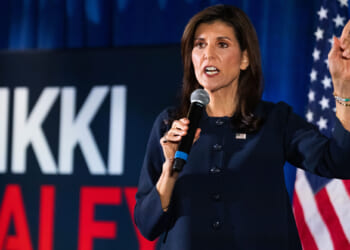
NEW YORK — The worst plunge for UnitedHealth Group’s stock in more than a quarter century is weighing on Wall Street, even as most stocks ticked higher.
The S&P 500 was 0.1% lower in its final day of trading for a holiday-shortened week. The Dow Jones Industrial Average was down 638 points, or 1.6%, as of 10:45 a.m. Eastern time, and the Nasdaq composite was 0.4% lower.
UnitedHealth was the main force dragging the market lower, and its stock was on track for its worst day since 1998 with a plunge of 21.7%.
The health care giant reported profit and revenue for the latest quarter that fell short of analysts’ expectations, and it also slashed its forecast for financial results this year. It was surprised by how much care its Medicare Advantage customers were getting from doctors and outpatient services, which was above the company’s expectations.
Another high-profile stock, Nvidia, also weighed on the market after sinking a second straight day following its disclosure that new export limits on chips to China could chisel $5.5 billion off its first-quarter results. It sank 3.4% and was the second-heaviest weight on the S&P 500.
They helped offset gains for the majority of stocks within the S&P 500 and across Wall Street. Technology stocks held steadier following their sell-off from the day before after global heavyweight Taiwan Semiconductor Manufacturing Co. reported a profit for the latest quarter that matched analysts’ expectations.
Perhaps more importantly, it also said it hasn’t seen a drop-off in activity from its customers because of President Donald Trump’s tariffs, as some other companies have suggested.
Still, the company known as TSMC was cautious. “While we have not seen any changes in our customers’ behavior so far, uncertainties and risks from the potential impact from tariff policies exist,” Chief Financial Officer Wendell Huang said. TSMC’s stock that trades in the United States rose 1%.
Eli Lilly was another winner after the drugmaker reported encouraging results for a once-daily pill that could help treat people with obesity and diabetes. Its stock jumped 13.4%.
The U.S. bond market also held steadier, as it has for much of this week following last week’s scary swerves. Those unusual moves last week had raised concerns that Trump’s trade war may be causing investors worldwide to lose faith in U.S. investments as the world’s safest.
Uncertainty still remains high across the economy because of tariffs, which Trump has said he hopes will bring manufacturing jobs back to the United States and trim how much more it imports than it exports. Economists worry that the tariffs, if fully implemented and left in place for a while, could cause a global recession.
Trump on Thursday offered some encouraging signals that negotiations with other countries could lead to lower tariffs, which is what Wall Street is hoping for.
“Had a very productive call with the President of Mexico yesterday,” Trump said on his Truth Social network. “Likewise, I met with the highest level Japanese Trade Representatives. It was a very productive meeting. Every Nation, including China, wants to meet! Today, Italy!”
The uncertainty about what will happen in Trump’s on-again-off-again rollout of tariffs, though, could by itself damage the economy. Federal Reserve Chair Jerome Powell helped send stocks lower on Wednesday when he said again that Trump’s tariffs appear to be much larger than the central bank was expecting, which could in turn slow the economy and raise inflation more than it had earlier thought.
That could set the Fed for a dilemma. It could cut interest rates to help the economy, but that would also push inflation higher. It has no good tool to fix both at the same time. Powell said again on Wednesday that the Fed would wait to see how conditions play out more before moving on interest rates.
Trump criticized that stance Thursday, saying the Fed is “always TOO LATE AND WRONG.” He also said, “Powell’s termination cannot come fast enough!”
That could spook Wall Street. An independent Fed able to act without influence from the White House is one of the primary reasons the United States has long enjoyed its status as a safe place to invest. History suggests central banks with more autonomy tend to have economies with lower and more stable inflation.
Research also suggests Trump’s past attacks on the Fed in favor of lower interest rates may have helped drive expectations in financial markets for lower rates, which in turn may have had some influence on the Fed. But conditions are different in Trump’s second term than his first, when inflation was low.
“This request for lower rates could backfire if markets perceive that going forward the Fed will be less committed to low and stable inflation,” according to Francesco Bianchi, an economics professor at Johns Hopkins University.
In the bond market, the yield on the 10-year Treasury held steady at 4.29%, where it was late Wednesday.
Reports earlier in the morning came in mixed on the U.S. economy. One said fewer U.S. workers applied for unemployment benefits last week than economists expected in the latest signal that the job market remains relatively stable. But another report said manufacturing in the mid-Atlantic region unexpectedly flipped to contraction from growth.
In stock markets abroad, indexes slipped across much of Europe. The European Central Bank cut its main interest rate, which is something that often pushes stock prices higher. But investors worldwide had already been expecting the move for a while.
In Asia, indexes were stronger. Stocks rose 1.6% in Hong Kong and 1.3% in Japan. Trump joined Treasury Secretary Scott Bessent and Commerce Secretary Howard Lutnick in talks Wednesday with a Japanese delegation in Washington.
___
AP Business Writers Yuri Kageyama and Matt Ott contributed.












